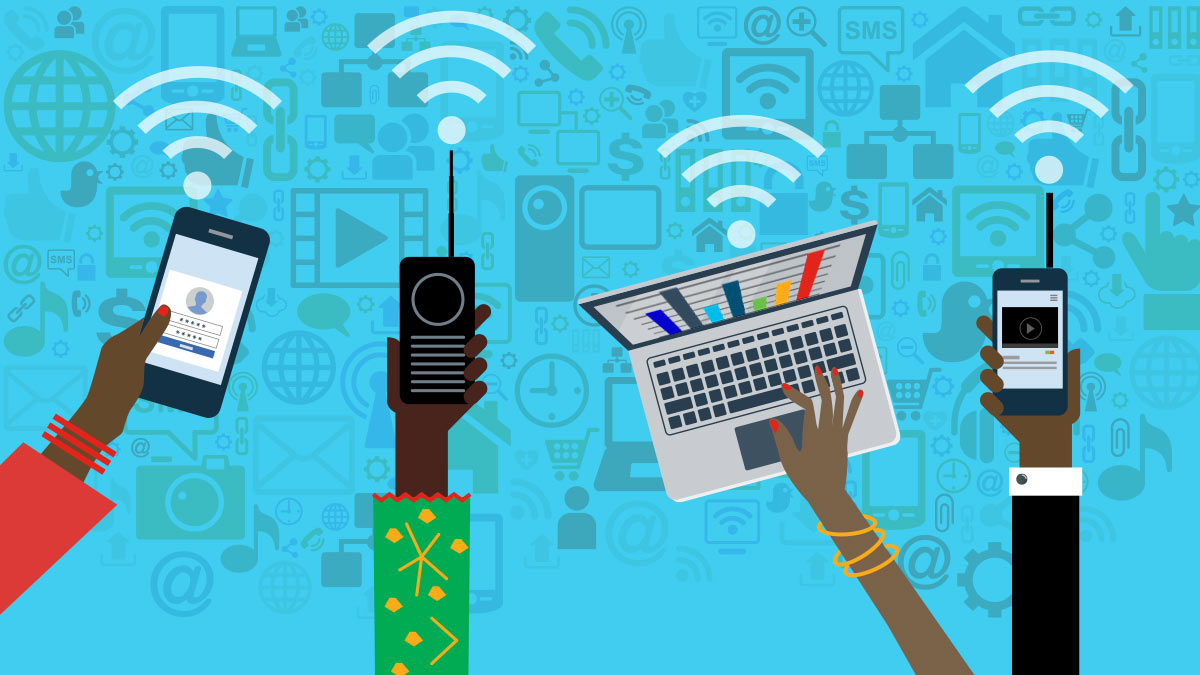
Internert.If you’re reading this, it’s likely that you already know what the internet is. But if we’ve sold you on our book, then it’s also likely that this is all new information to you. We’re here to help! Let’s start with a little bit of history: The internet was born in 1969 at UCLA when researchers created ARPANET—the first computer network operating system—to connect computers across the country. It wasn’t until 1983, however (or 1982 if you’re using US English), when Tim Berners-Lee invented something called hyperlinks and introduced them on the World Wide Web (WWW).
Online versus on-line
There are two different words that mean “connected to the Internet”: online and on-line. Online is a noun, while on-line is an adjective.
Online means connected to the internet. It can be used as a noun or an adjective for someone who uses the internet, or something that is done using the information superhighway—for example, “My brother works at home from his laptop; he’s an online entrepreneur!”
On-line means in a state of being online and not off it yet; it also means being active on some kind of website or software application like Facebook or Twitter. You can use this word as either an adjective or a verb—for example, “I am always on-line with my friends through WhatsApp!”

Internet Speed Test
- What Is An Internet Speed Test
An internet speed test measures how fast your internet connection is. Your Internet Service Provider (ISP) may tell you how fast you should be able to get, but this is not always the case. Some ISPs will give you extra bandwidth during certain times of day, or if they know it’s a busy time for the network; this can make your browsing experience seem faster than it actually is. For example, if YouTube starts streaming video at high quality when many people are watching at once then everyone’s video will load slowly and buffer every few seconds during playback until the ISP catches up with demand.
- How To Run An Internet Speed Test
Most modern computers come with an integrated web browser that allows users to connect directly to websites without installing additional software. This makes it easy for anyone who owns one! All they need do is open up their browser (Chrome/Firefox/Opera/Edge), visit www..com and start testing their own connection speed right away!
Test Internet Speed
- How to test your internet speed:
You can test your internet speed by performing a test through the search engine Google or another service like Ookla, Speedtest.net and Pingdom. These sites offer free tests that will show you how fast your connection is and what kind of speeds are available in your area.
- How to perform an internet speed test:
To perform an internet speed test on your computer’s browser, click on the link we provided above and follow the instructions from there. Note that some browsers have built-in tools for this purpose as well! You’ll be able to see how fast (or slow) your connection is in mere seconds; if it’s too slow for what you need then consider upgrading soon!

Starlink Internet
Starlink Internet is a fiber optic network that provides high-speed internet to the home, wirelessly. Starlink is available in some areas of the US but not all areas.
- Check if Starlink is available at your address: https://www.viasatbroadband.com/en/satellite-internet/#products
- If you have questions about Starlink service, call 1-855-871-3992 (TTY users dial 711).
My Internet Speed Test
I’m going to show you how to do an Internet speed test, and how to use the results.
- First, let’s explain what an Internet speed test is and why it’s important to have one. An internet speed test measures how fast your connection is moving data from one location on the internet (your computer) to another location on the internet (the server being tested). It can also tell you whether or not there are any problems with your connection such as a weak signal or poor quality cable.
- Second, let’s explain what kind of tool we should use for this job: We’ll want something that measures both upload speed and download speed at once so we get a complete picture of what’s going on with our connection – especially when trying out different services like Netflix while watching TV shows online! We’re looking for something simple but effective; something reliable yet affordable; something that doesn’t require us installing anything extra on our computer…
:strip_icc():format(jpeg)/kly-media-production/medias/1383177/original/094577200_1477297071-internet_.jpg)
The Internet Archive
The Internet Archive is a non-profit organization that preserves the history of the internet and makes it accessible to everyone. It’s free to use and open to anyone who wants to contribute their knowledge, content, or expertise. The Internet Archive offers books, movies, music and more all free of charge with the goal of making it easier for people all over the world to access what matters most about our shared past.
The Internet Archive operates as an online library with thousands of downloadable items available for streaming or download in one click including more than two million texts from 150 countries—everything from books & journals to postcards & photographs—as well as video hosting services (YouTube), live public audio broadcasts (RadioArchive), single page snapshots (Snapshots) and much more!
Internet versus internet
The Internet is the world’s most powerful and expansive network, where people can connect to one another and share information. It consists of billions of devices that communicate with one another through software protocols (the rules that dictate how data is passed from point to point). The Internet’s backbone is made up of thousands of networks owned by private companies and organizations; this backbone connects to other “internetworks,” like cellular networks and satellite systems, which then carry traffic further into homes, cars, and offices across the globe. The result? A global network that brings people together for work or play—and everything in between!
Web versus web
The web is a common abbreviation for the World Wide Web (also known as the internet), but in English, “web” can also mean spider webs and networks. The word comes from Old English webb, which was used to describe any structure made of interwoven strands—such as a spider’s nest or fishnets.
You might have also heard that internet is short for “interactive network” or “internetwork.” But these aren’t really accurate descriptions of what it stands for: its original meaning was more like “network of networks.”

The net versus the Net
The net is a misspelling. The correct term for the Internet is “the Net,” as in “The Net’s gotten more expensive since I last checked it out.” The Net is a proper noun that refers to the Internet, and it’s one of the most common misspellings I see online (especially when people try to write about their own companies).
How do you know if you should use “the net” or “the Net”? It depends on what type of sentence you’re writing:
- If your sentence refers to networks like the World Wide Web and intranets, then use “networks.” If not, use “Internet.”
- If your subject is plural (such as several people), or if there are multiple locations where something might occur (such as at two different schools), then use “networks.” Otherwise, use “Internet.”
Online versus offline
The distinction between online and offline is not a new one. It has existed since we first began using the term “online” to describe people who were connected to the internet through their computers, smartphones and other devices. The opposite of this would be someone not connected to the internet or “offline,” which you can still be even if you’re using your smartphone or laptop while sitting in front of a computer monitor that isn’t plugged into anything else.
While this may seem obvious on its face, there are times when it’s important for us to remember that we aren’t always online just because we have our device in hand—or even because we have access to WiFi at home or work. For example: It’s possible for someone (like me) who considers themselves an avid user of social media sites like Twitter or Facebook but rarely logs into them after work hours; this person might say they’re “offline” even though they keep their phone handy at all times in case someone wants an update on how things went at school today or needs help unloading groceries from their car afterward.

Sign on versus sign in
Sign on is a noun, and sign in is a verb. When you’re signing into a website or service, you’re “signing in.” Using “sign on” in this context would be incorrect.
However, when we talk about logging into something (like your email account) by entering your username and password into the appropriate fields on the site’s login page, then we say that we’ve “signed on.”
Sign-in versus sign-in
- sign-in is a noun
- sign-in is a verb
- sign-in is a hyphenated word (sign-in)
- sign-in is an uncapitalized word (sign in)
You should use lowercase, one word, and hyphenate when appropriate.
- Use lowercase, one word and hyphenate when appropriate.
- Do not use capital letters for Internet, Web or Net.
Conclusion
If you want to learn more about the internet or how to use it, check out our guide.
Read More: dashcam








